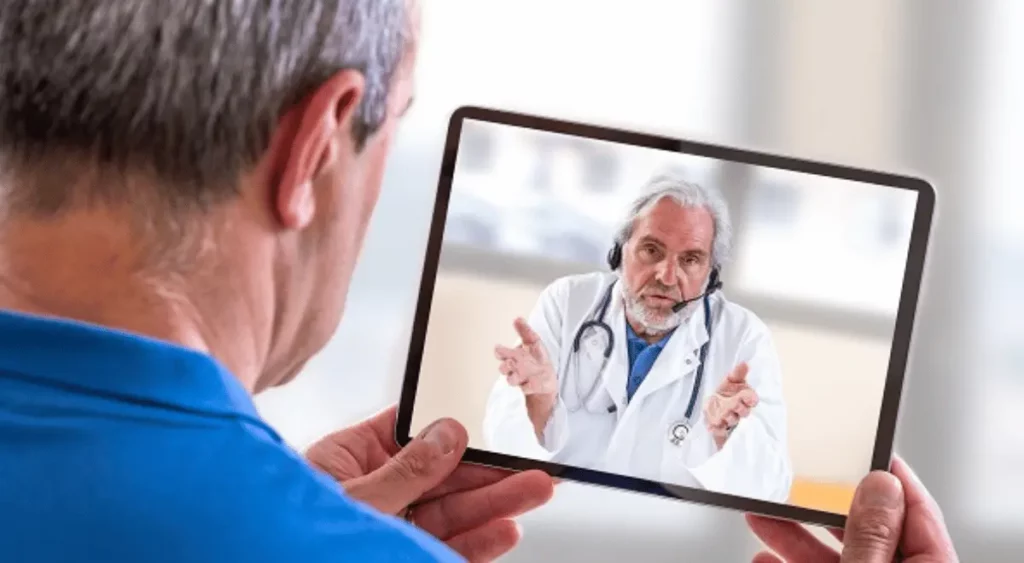Telemedicine in The Field of Cardiology

In the cardiology field, telemedical services primarily include providing a portable device to record ECG/EKG signals and breathing for continuous heart rate monitoring. Using integrated recognition algorithms, this device is able to identify a patient’s heart rate disturbances. The corresponding ECG recordings are then forwarded to the telemedical center, where they are analyzed in detail. If the deviations are confirmed, the medical staff must take the necessary measures according to a specified scheme.
Table of Contents
ToggleBenefits for The Patient
- Complete diagnostics in the area of heart rate disorders
- Possibility to continue medical treatment in the home environment
- Patients feel more secure, thanks to quick and easy contact with medical staff
- Detection of heart rate disturbances including automatic notification of medical staff
- Shorter response times in life-threatening situations
- Convenient and convenient execution of examinations
Benefits to The Medical Facility
- Shorter duration of inpatient treatment and reduced costs for a longer one
- Hospitalization of a patient
- Monitoring of the patient’s state of health
- Recommendations are also followed outside of the hospital
- Relief of the medical staff in the hospital
- Better reputation and image of the medical facility
Also Read: Remote Therapeutic Monitoring and Benefits
Detect Common Heart Diseases in Real-Time
- Tachycardia and bradycardia
- Breaks
- Atrial fibrillation
- Ventricular fibrillation
- Ventricular tachycardia
- Apnea
- Stop heartbeat after atrial fibrillation
Application Examples
In the telemedical care run-up, the patient is asked in detail about cardiological diseases and a reference ECG. On this basis, individual reference ranges and limit values can then be defined for each patient, and if these are exceeded, specific measures are automatically initiated in the telemedical center. This individual patient monitoring data ensures the best possible medical care.
Cardiological Monitoring
It is used to record the heart rhythm in any observation period. The patient decides for himself when and how long the cardiological telemonitoring should last. During the entire period, the patient is continuously looked after by medical specialists. The examination can take place over a full 24 hours during selected activities (e.g., rehabilitation measure or walk) and also in the event of complaints, restlessness, or stressful situations. The data transmitted to the telemedical center are continuously analyzed. In the event of any abnormalities, the patient is contacted in accordance with the established course of action and applicable procedures. After completing the telemonitoring, the patient receives a report with recommendations for further action.
Long-Term ECG
Used to record the heart rhythm (7 or 12 leads) over a period of 24 hours. The use of exchangeable battery modules enables long-term, uninterrupted ECG recording. In addition to recording the data, the device also transmits information on automatically recognized abnormalities to the telemedical center, where appropriate measures are then taken. Thanks to the integrated GPS/GSM module, help can be sent directly to the place where the patient is located in an emergency.
Required ECG/EKG Recording
A resting ECG with 12 leads can be written at any place and at any time. The recording is carried out according to medical recommendations, e.g., at the same time or when certain symptoms occur. The patient carries out the examination independently; the result is transmitted directly to the telemedical center, where the evaluation takes place. The evaluation results are, in turn, transmitted directly to the device as findings in text form. In an emergency, the patient can also be contacted by phone.
This ECG examination is also suitable for patient groups.
Cardio Event Recorder
An event recorder is used to record short ECG episodes when certain symptoms occur. This method can be used to uncover the cause of a patient’s health complaints such as heart palpitations, syncope or pain. As soon as the symptoms to be examined arise, the patient must press the device onto the skin in the chest area to record the ECG. This procedure is recommended in cases in which a 24-hour long-term ECG often does not provide sufficient results. Each recording is sent to the telemedical center for evaluation.
The provision of services within the framework of remote cardiac care is carried out in accordance with the recommendations of the referring specialist.
Also learn about, Remote therapeutic monitoring services by HealthArc.





